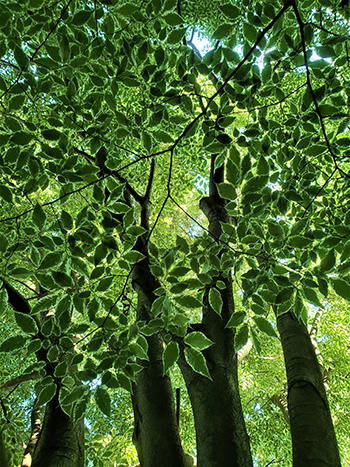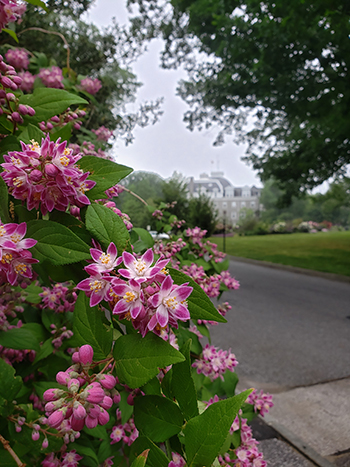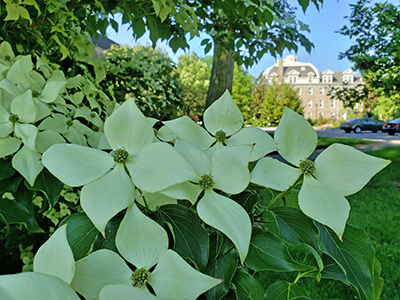
Plants of the Week: May 31
Guest Author: Summer Intern Hailey Dunbar

Zelkova serrata ‘Goshiki’, commonly referred to as the Japanese zelkova, is a stunning deciduous tree that typically grows between 50-80 feet tall. Unlike other members of the elm family, this tree is resistant to Dutch elm disease, thus making it a prime candidate for replacing more susceptible species such as the American Elm (Ulmus americana). The timber is often harvested for construction or furniture, and the beautiful contrast of the white and green variegated leaves create an eye-catching focal point in ornamental gardens. The Scott Arboretum’s specimen can be found alongside the McCabe Library. Photo credit: H. Dunbar

Deutzia x hybrida ‘Magicien’, commonly known as deutzia, is a bushy shrub 4-6 feet tall that produces a stunning array of light-pink to dark-pink star-shaped flowers that adorn the entire plant for about two weeks. The bright green foliage highlights the flowers to create an attractive and dense display from late spring through early summer. It is resistant to deer and most insects and diseases and is fairly low maintenance, except for some pruning directly after flowering. It is currently blooming in the Scott Entrance Garden. Photo credit: H. Dunbar

Cornus kousa ‘Greensleeves’, the kousa dogwood, is a heavily-flowering tree producing stunning white bracts on the entire plant which persist for up to six weeks. The plant produces a plethora of edible fruit in the fall that have a variety of culinary uses. The fruits are eaten raw, though the rind is often discarded. They are also fermented into juices or wines and added to breads and other baked goods. Wildlife can often be seen indulging in the beautiful red and orange fruits for delicious daytime snacks. Visit the Terry Shane Teaching to find the bloom ladened branches. Photo credit: H. Dunbar





Crystal Dunbar
Posted at 20:41h, 07 JunePhotos are stunning! Love the notes,on edible attributes!
Alan Kruza
Posted at 08:17h, 10 JuneExcellent photos and text, Hailey. Well done.
Becky Robert
Posted at 08:21h, 10 JuneThank you Alan. Hailey explored some great plants this week!
I hope to see you on the grounds some time this month.
Sincerely,
Becky